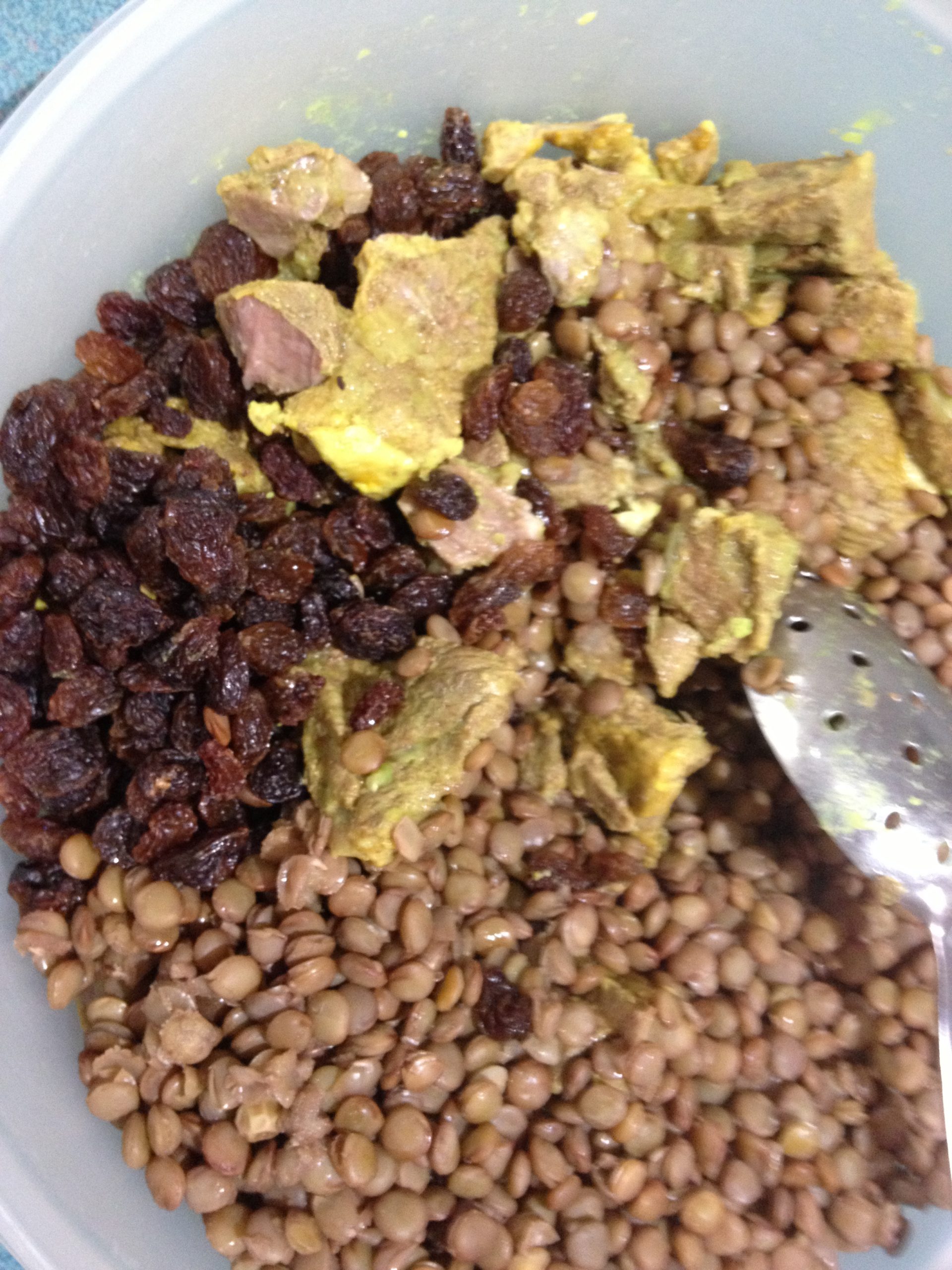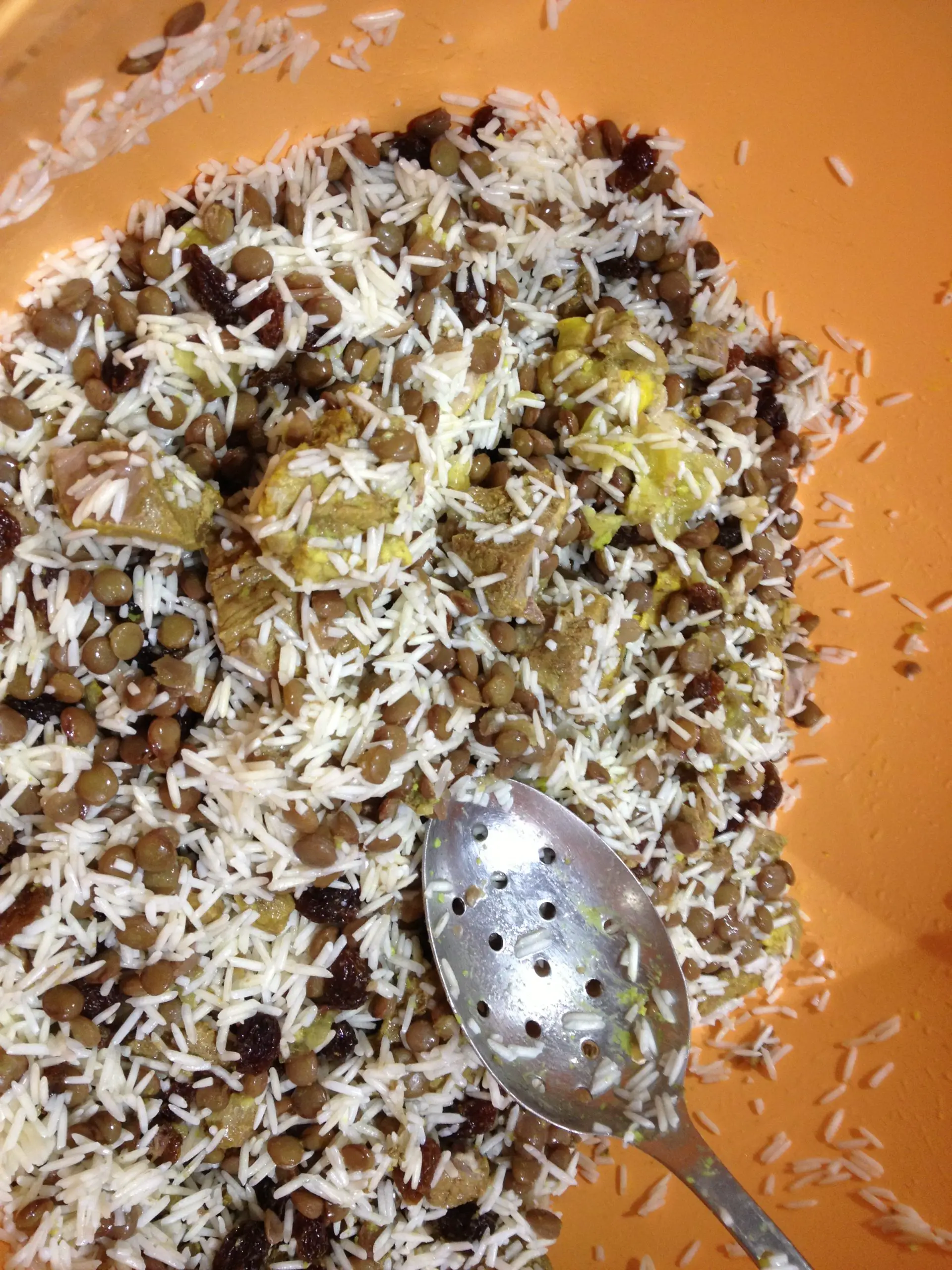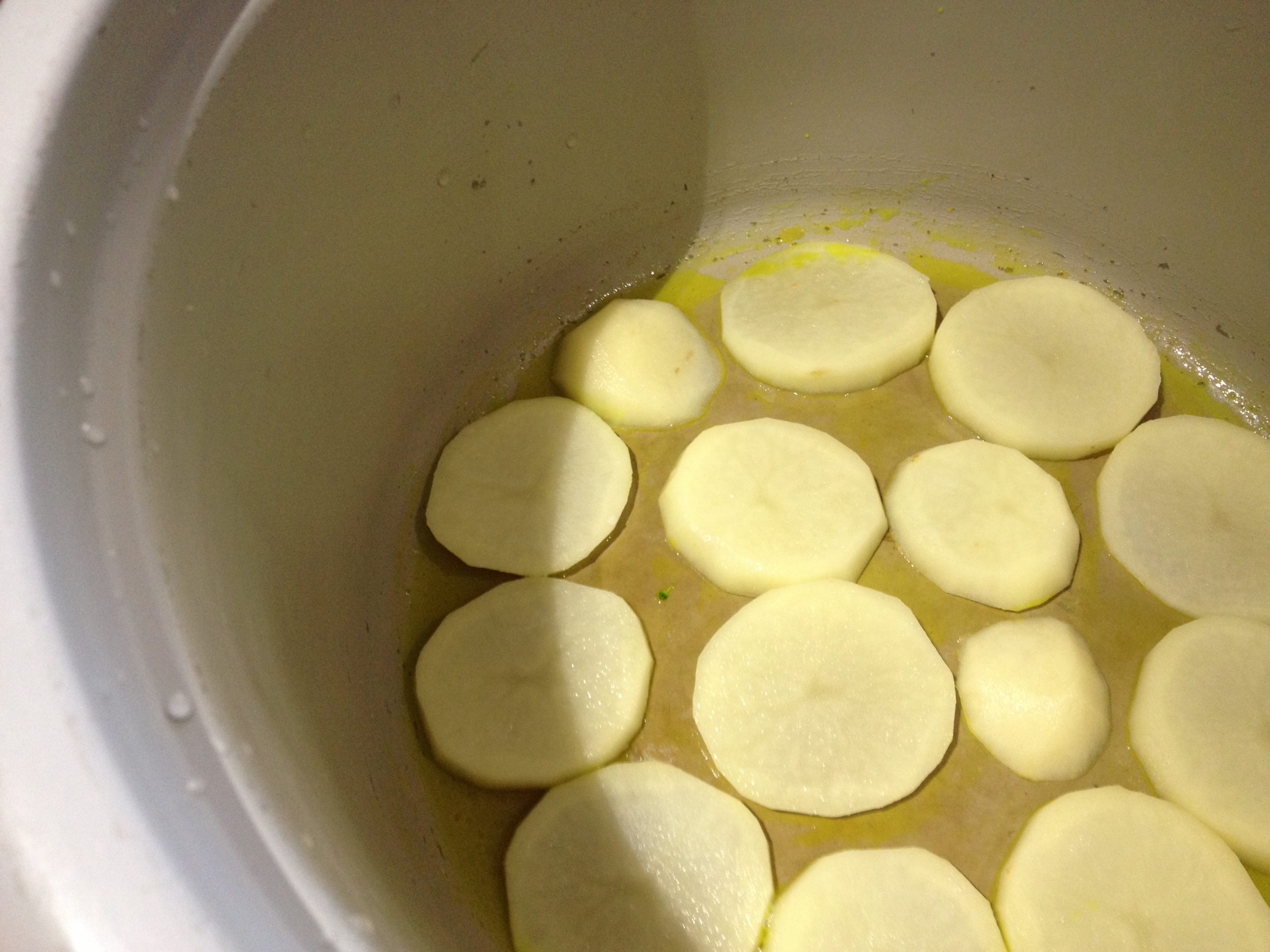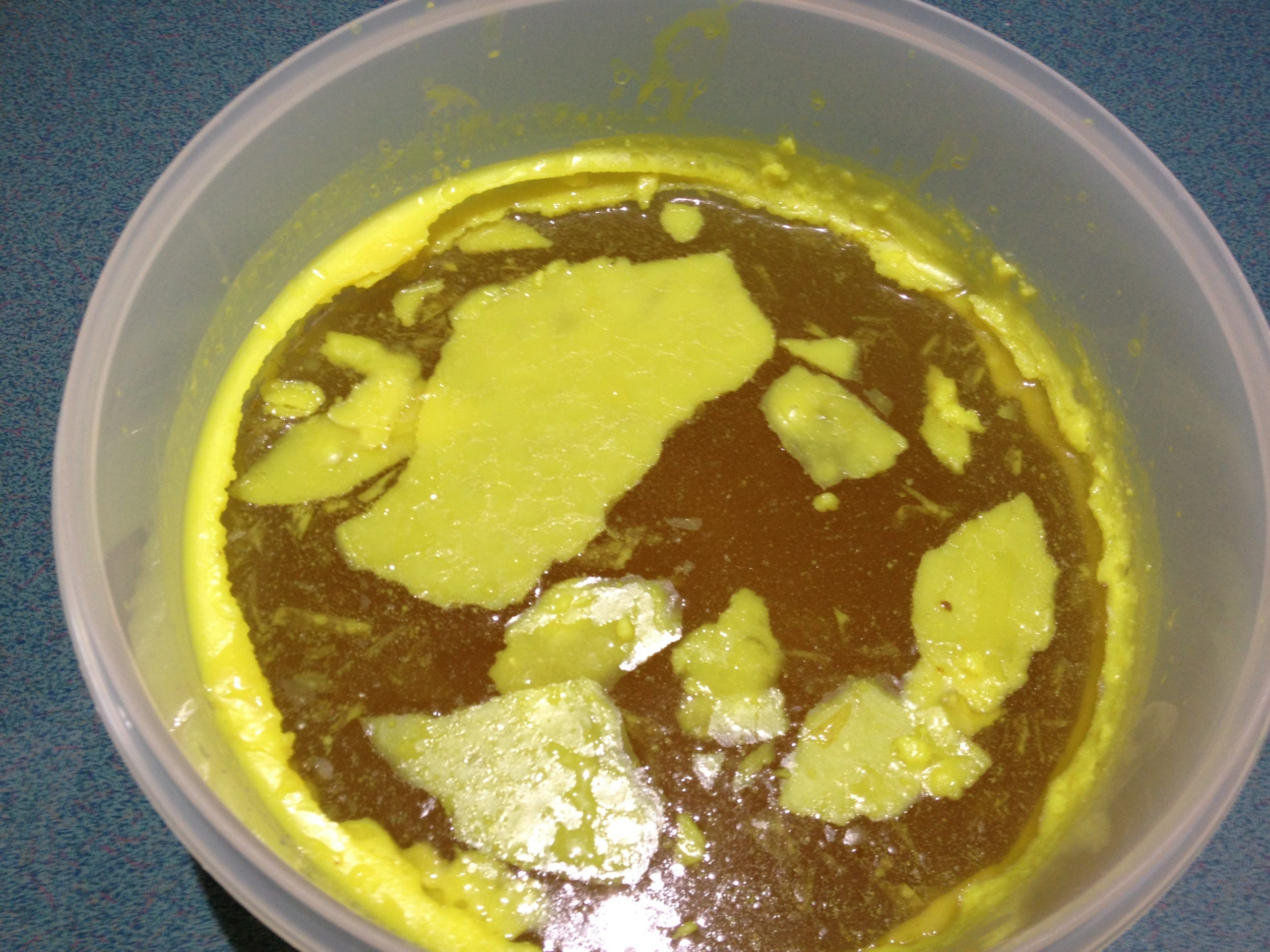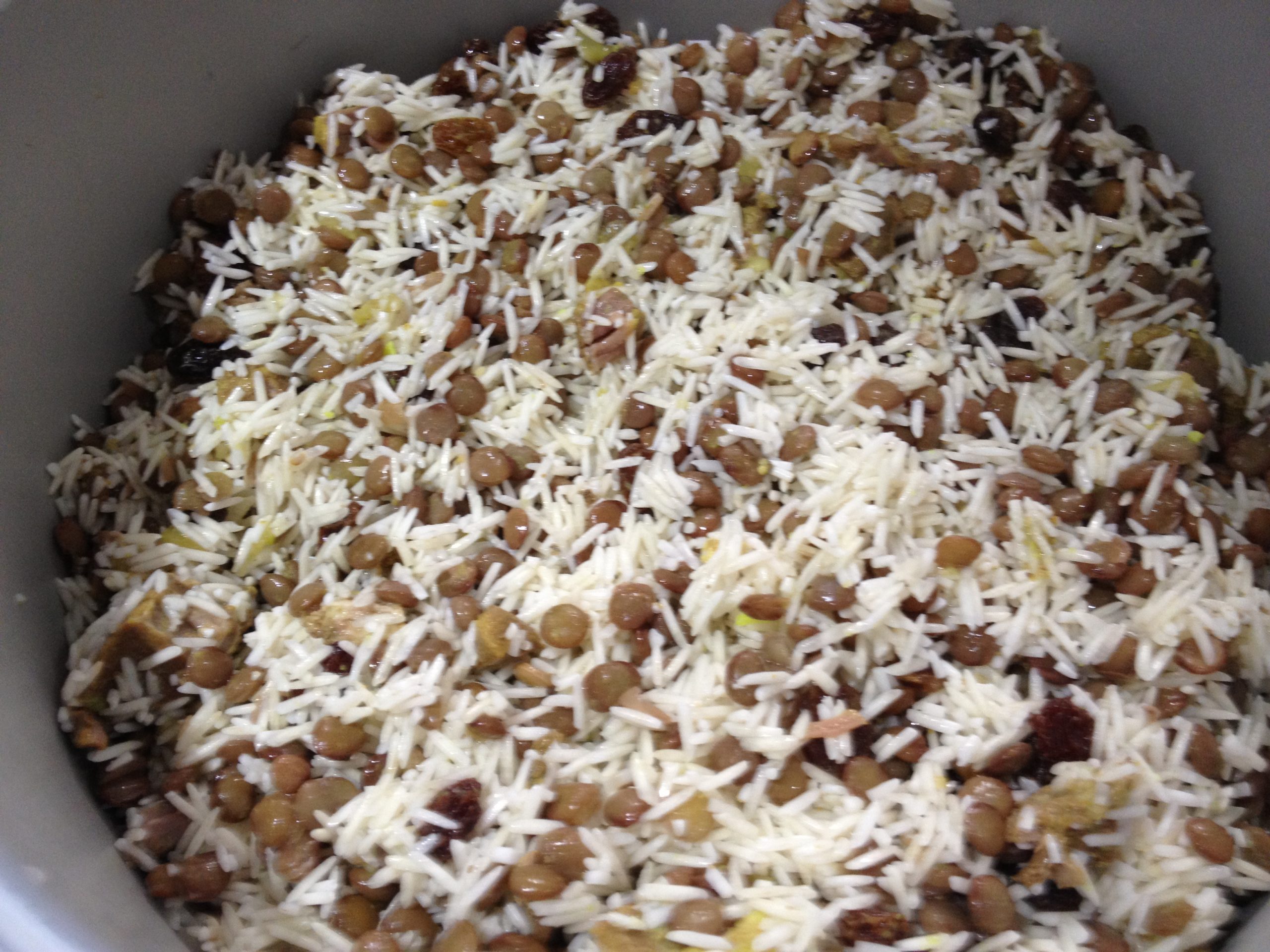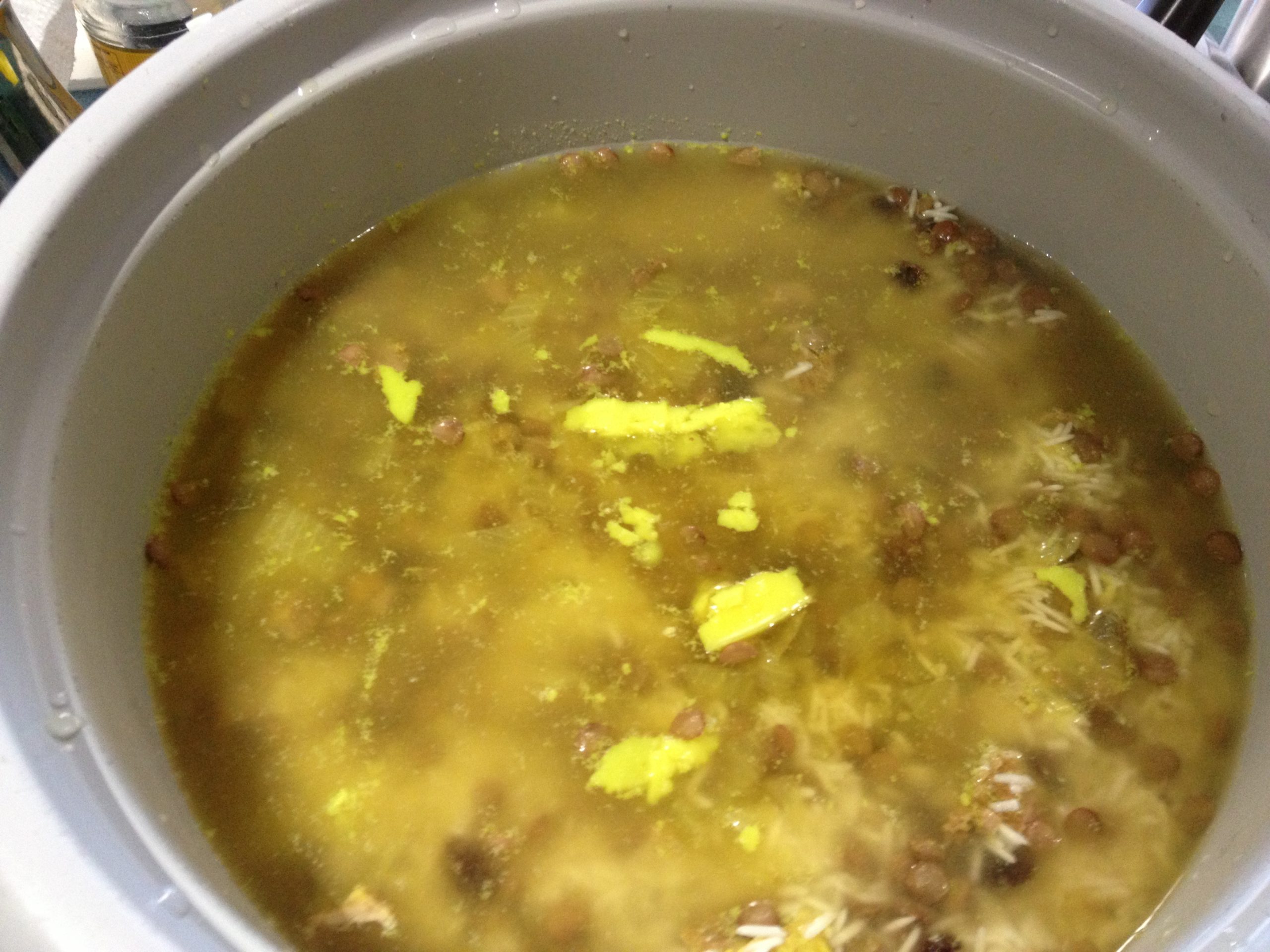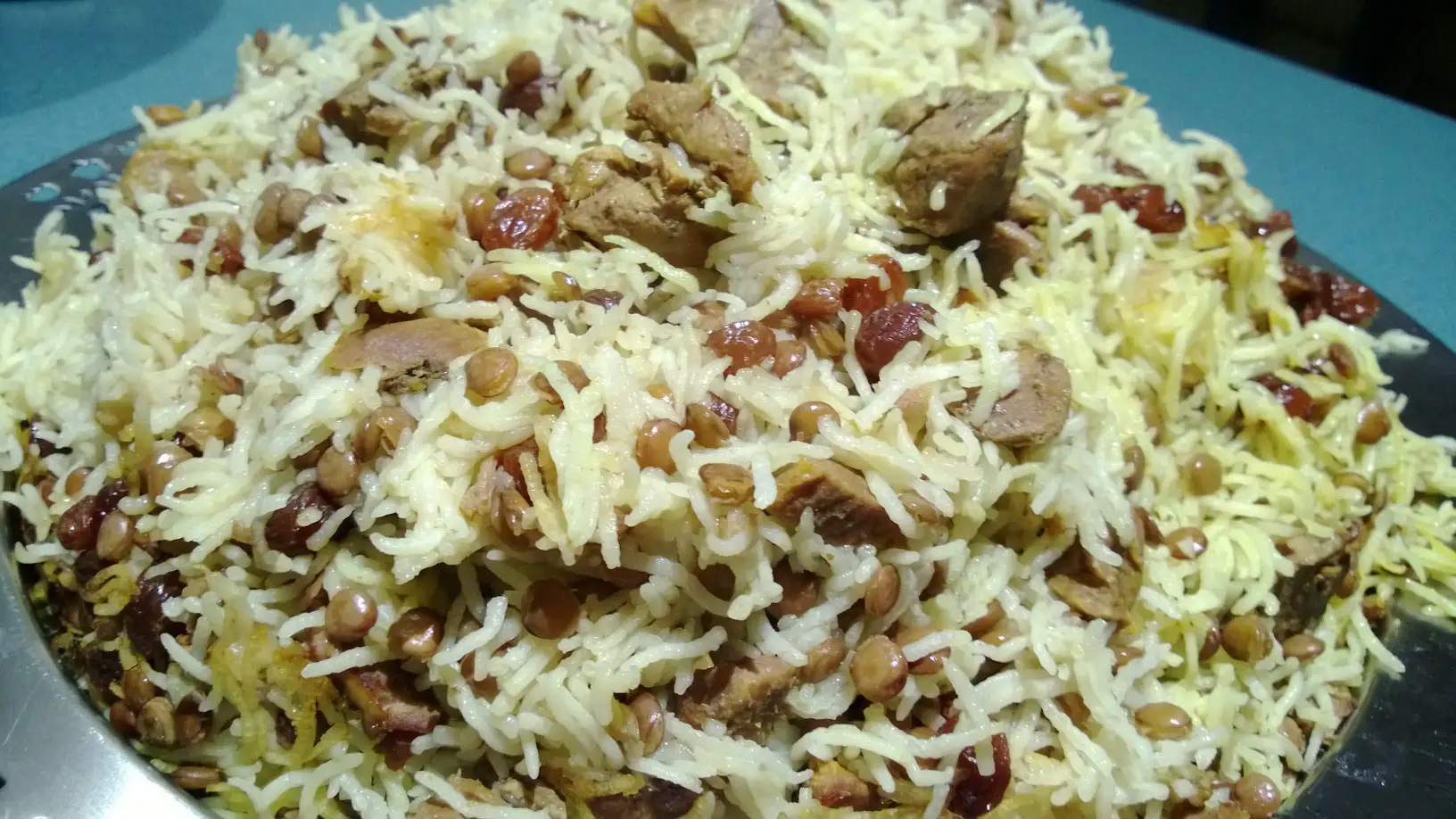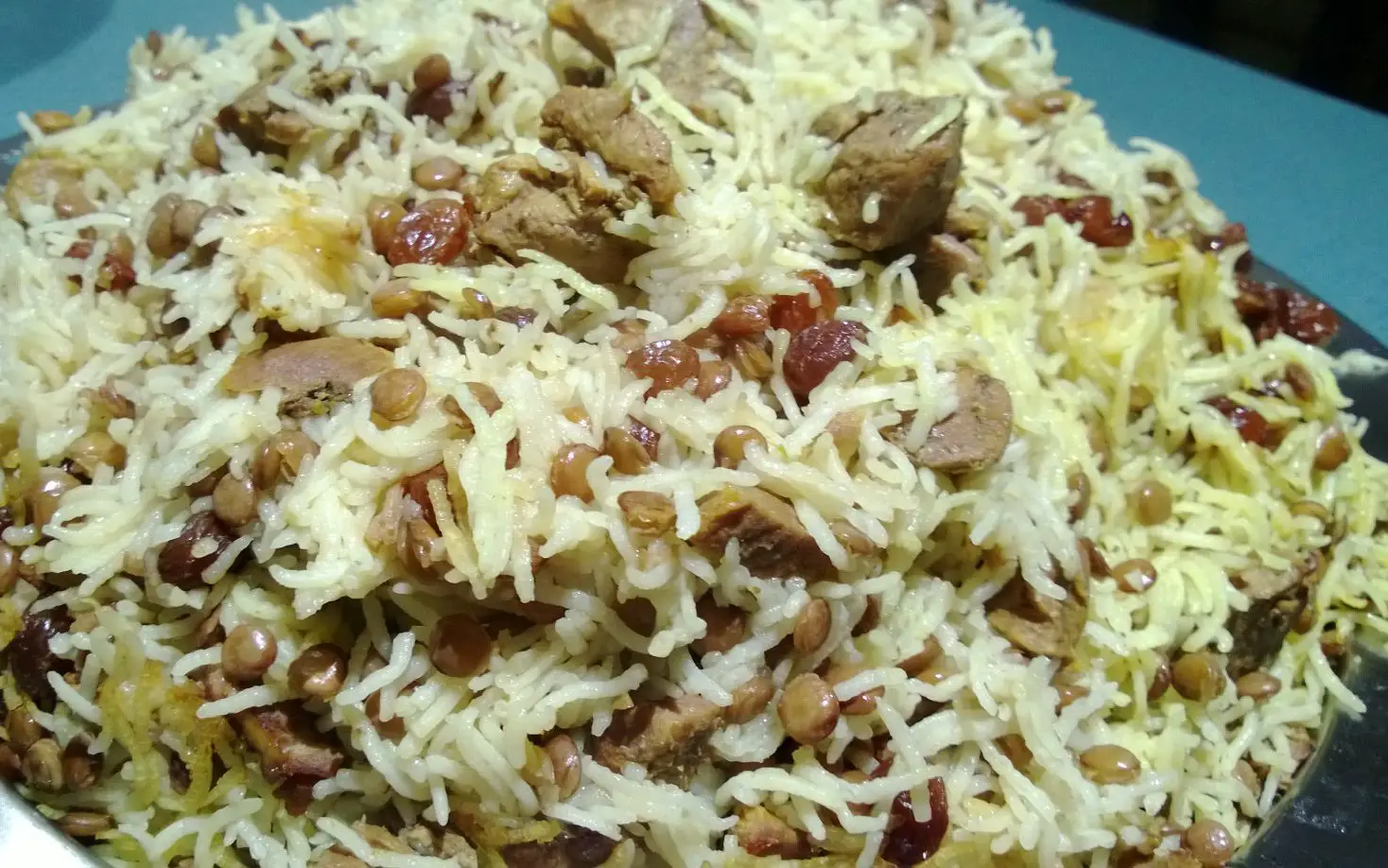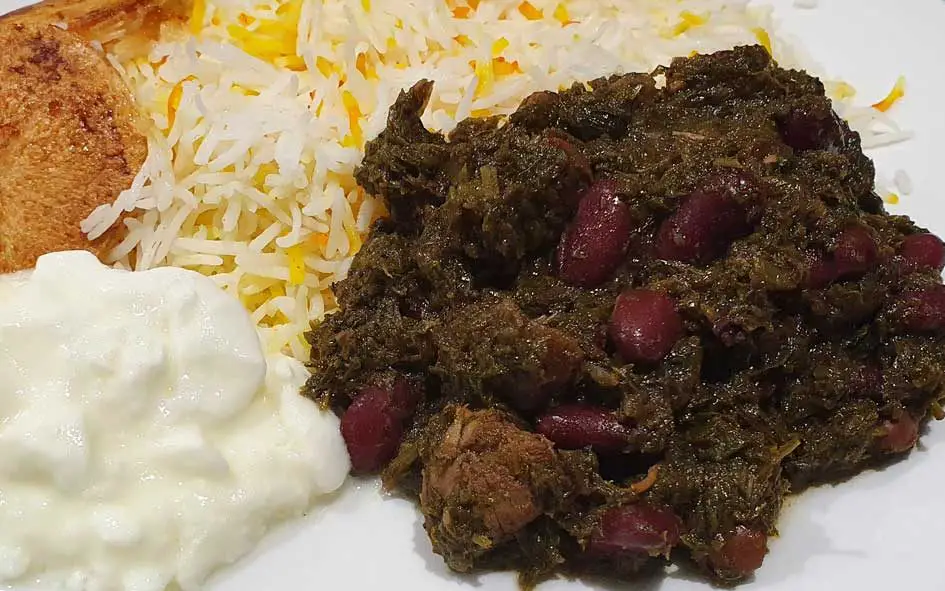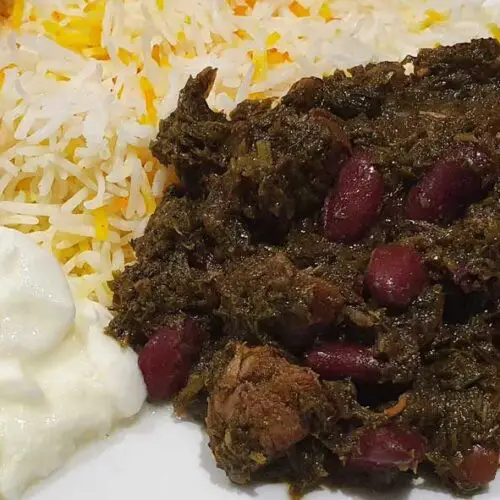This Adas Polo recipe with Lamb, and although it takes a while to cook, it is one of the easiest Persian recipes.
Boil the lamb, onion, turmeric, salt pepper in a pressure cooker until the lamb pieces are well cooked.
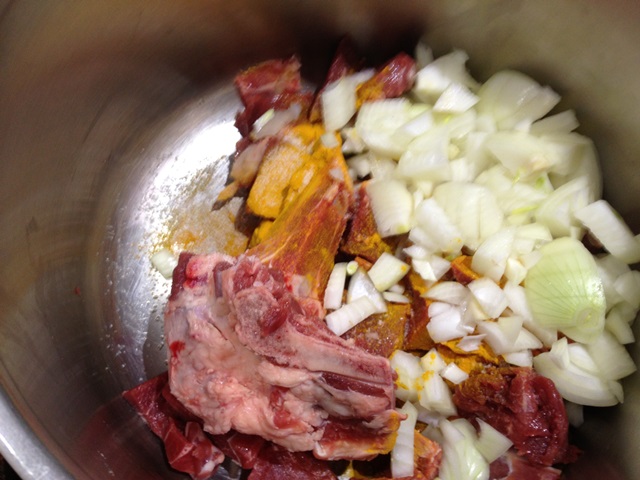
I usually then place this in fridge over night to remove excess fat that has solidified over night. Keep some though, as this is delicious on in the rice and adds the required fat to keep the rice grains separated and to crisp the tahdig at the bottom of the pan.
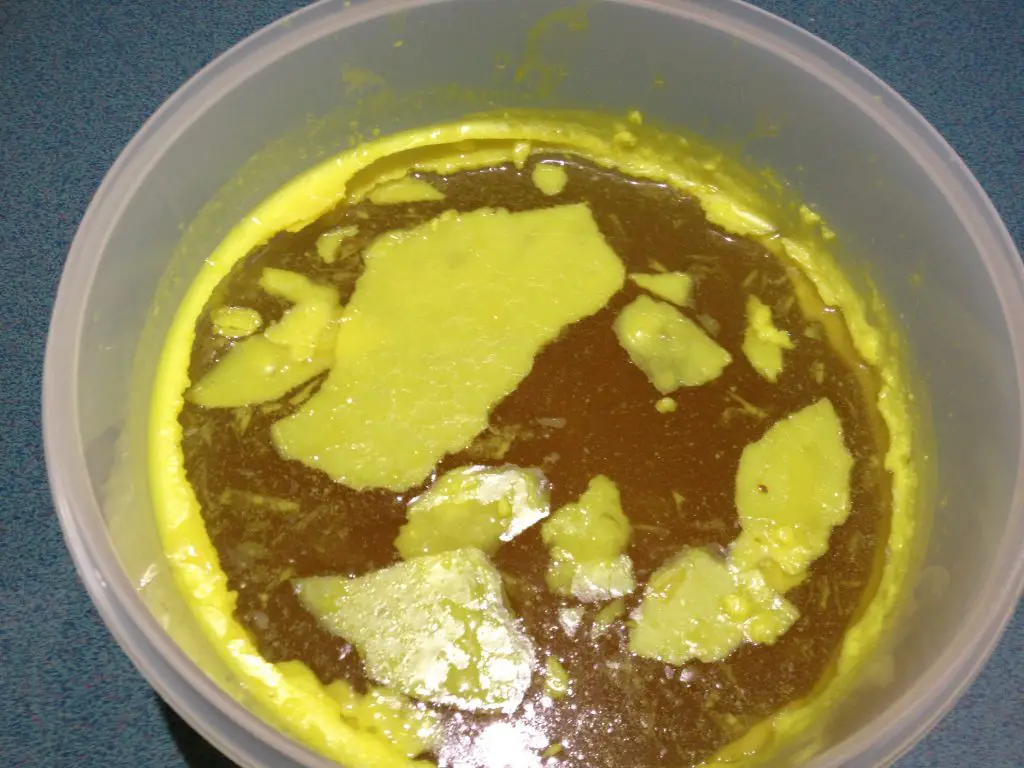
If you wish, you can boil more lamb pieces and then store the remainder in the freezer to make the recipe a second time, for a lazy Sunday night meal. Just defrost the stock and lamb pieces before using.
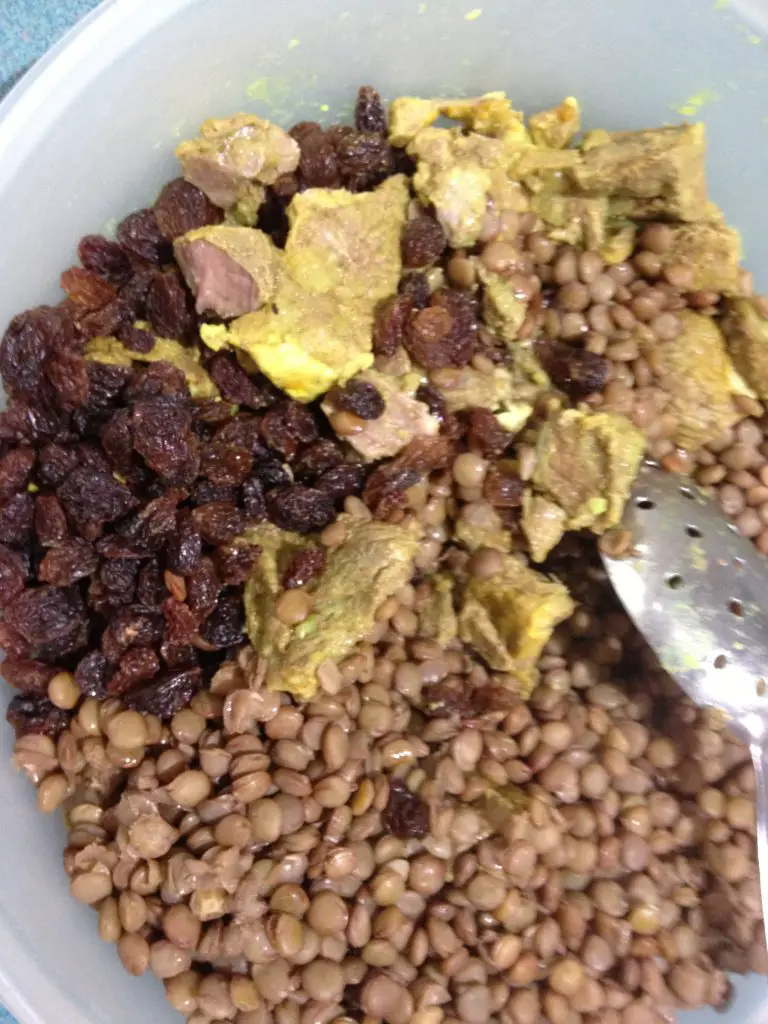
The rice is not precooked, rather washed and stirred through with the cooked adas (green lentils), boiled chunks of lamb, and sultanas. Then spooned into the rice cooker and the lamb stock is gently ladled over the rice. The rice cooker is then set to cycle through it’s normal cycle.
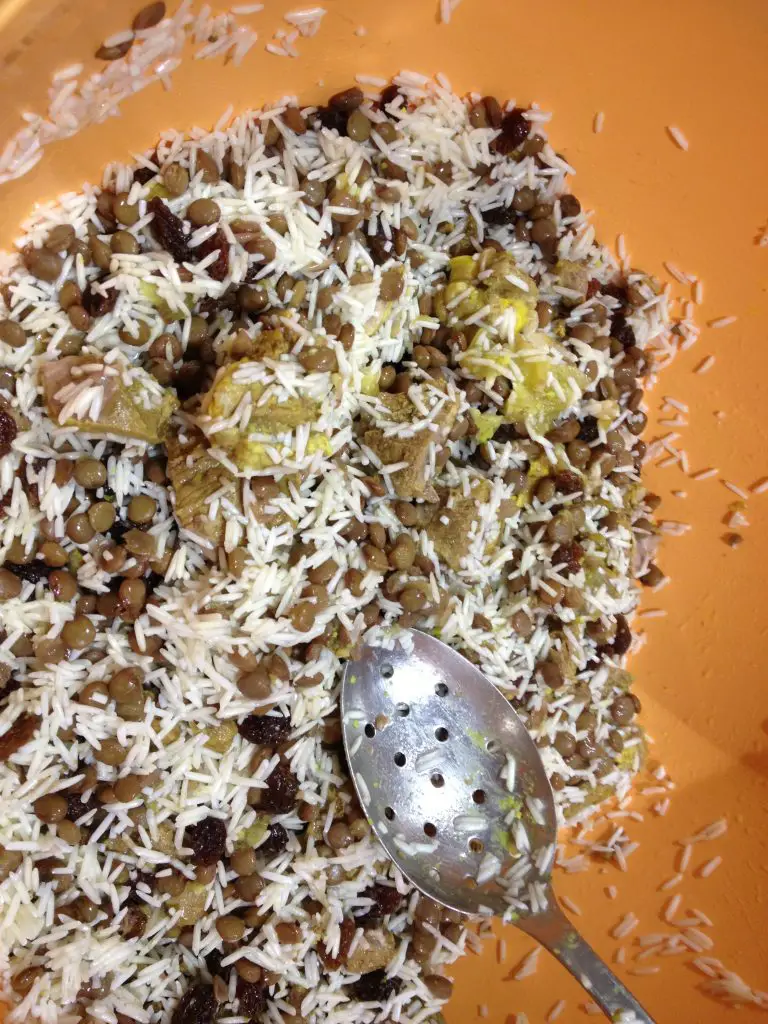
The trick to this Adas Polo recipes is to ensure that you use the correct amount of liquid to the rice. This can be quite varied depending on the type of rice you use. I usually find that 1 cup of rice to 2 cups of liquid ratio works well for the Indian Basmati rice.
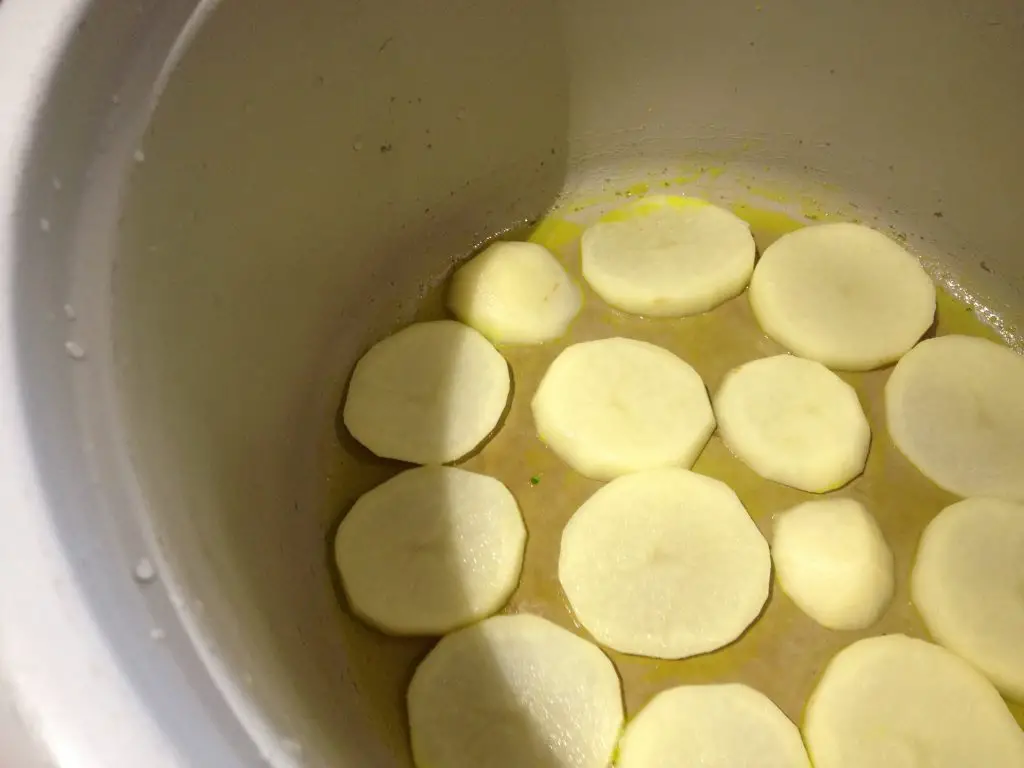
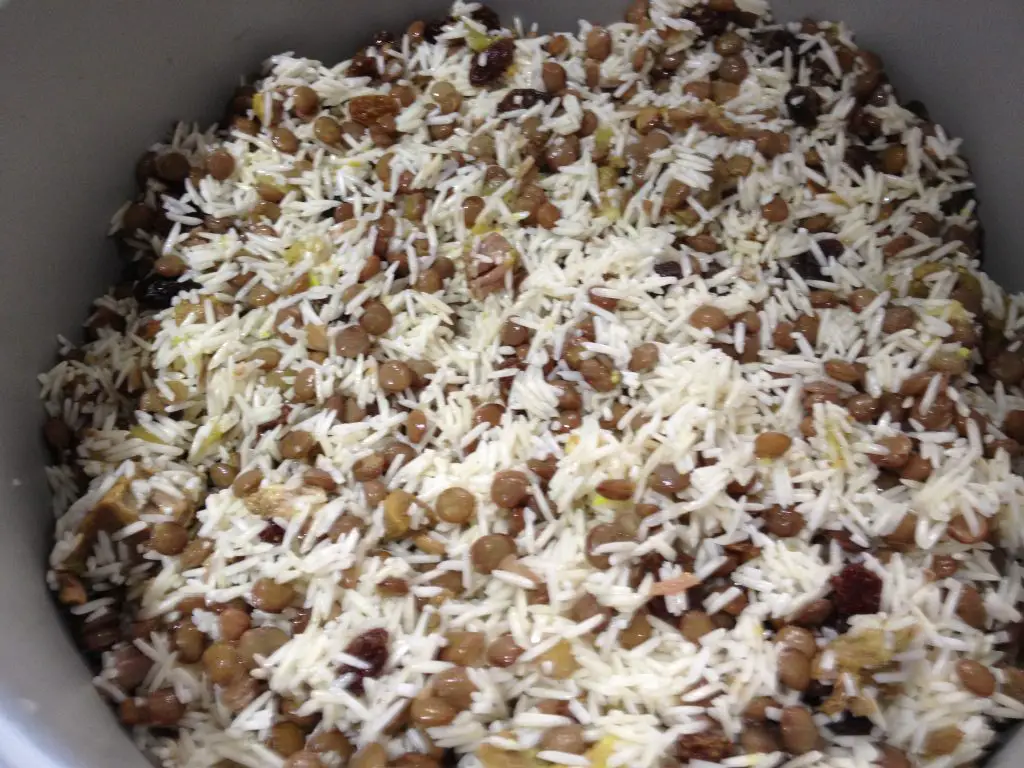
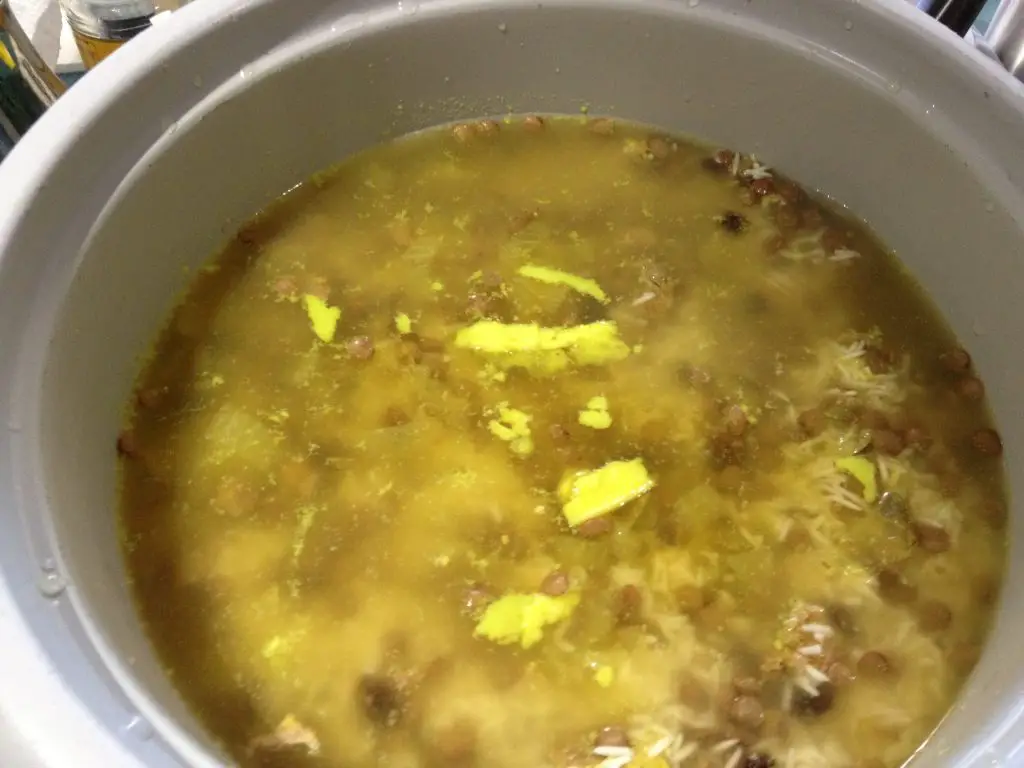
I tend to prefer the green lentils over brown lentils for this recipe as the green lentils tend to retain there size and shape better during the cooking process in the rice cooker.
I have made this recipe with Brown rice, and it is equally delicious, but our family much prefer the white rice version. The natural sweetness of the sultanas makes a delicious combination through the rice and lentils.
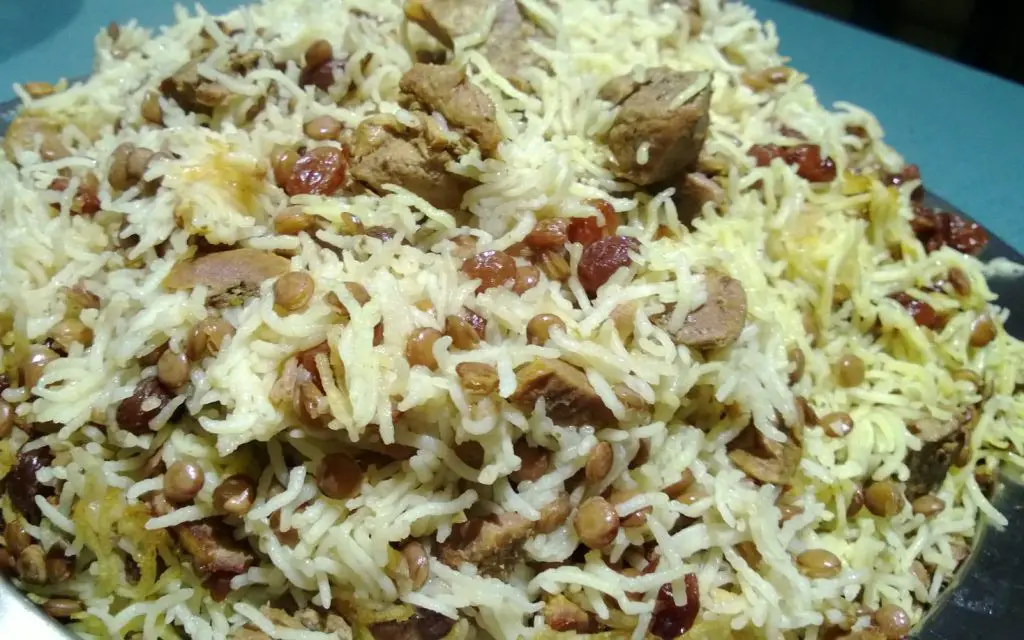
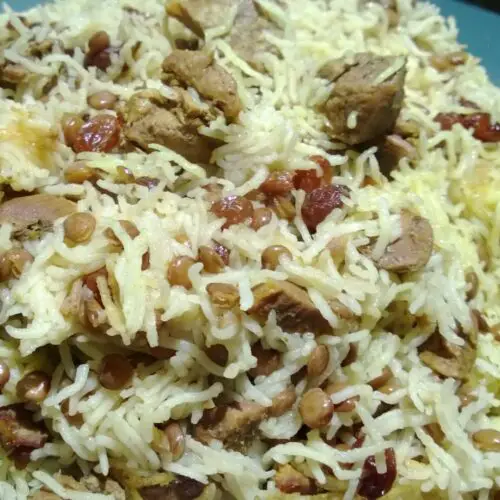
Easy Adas Polo with Lamb
Equipment
- 1 Persian Rice Cooker
Ingredients
- 2 cups basmati rice
- 2 tlbs salt
- 1 kg lamb pieces
- 1 onion
- 1 tsp turmeric
- 2 tlbs salt
- 1/2 cup sultanas
- 1 cup cooked adas (green lentils)
- 1 potato
Instructions
- Place lamb, onion, salt and turmeric in a large saucepan. Cover with water, bring to boil.
- Lower heat and simmer until the meat is falling off the bones, about an hour.
- Remove lamb, and discard the bones.
- Boil the lentils in water till half cooked and strain.
- Wash the rice in water and soak while the lamb is cooking.
- Strain and wash under running water to remove any remaining starch.
- In a large bowl, add the uncooked rice, lamb, lentils and sultanas and stir carefully to distribute the ingredients.
- In the bottom of a heavy based saucepan, or a Persian Rice cooker ladle about 1/2 cup of lamb stock, and cover with a layer of sliced, peeled potato to form the tahdig.
- Gently spoon the rice mixture over the potato.
- Measure out 4 cups of stock and gently pour over the rice mixture, being careful not to dislodge the sliced potato.
- Place a tea-towel or a cloth under the saucepan or rice cookers lid to absorb any excess moisture while the rice is steaming.
- Cook on a high heat until the sides of the pan are hot to touch, then reduce the heat to low and cook for about 30 – 45 minutes. Alternately if using a Persian Rice cooker, allow to run the full cycle.
- Place the bottom of the saucepan or rice cooker pan in about 3 cm of water in a sink to loosen the tahdig.
- Turn the pan upside down onto a round serving dish to serve.
Notes
Nutrition
Suggested accompaniments for Adas Polo is thickened plain yogurt and Shirazi salad.
Lentils are high in protein and folate (folic acid) otherwise known as Vitamin B9, and are often a staple in vegetarian and vegan diets, making this recipe both economical and nutritious.
This recipe can be adapted to a vegetarian dish by replacing the the lamb with vegetables, such as carrot and celery, to develop a good quality vegetable stock.
Our standard layered Adas Polo recipe where you cook rice first in water, is a vegan recipe.

